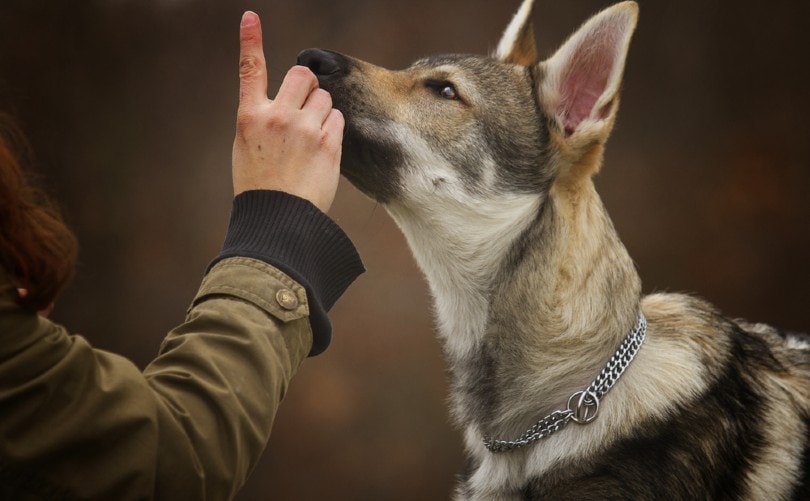
Teaching our dogs tricks isn’t just a fun way to show off to friends. Regular training sessions can help keep your dog mentally sharp and increase the bond with your pet.
Teaching your dog to speak is a great way to stop excessive barking behavior, but it’s a tough command to teach if you don’t do it right. Here, we outline a few tips and tricks to help you teach your dog to speak.
What Is the Best Way to Teach a Dog to Speak?
There is no one definitive answer to this question because every dog is different and will learn differently. However, there are a few tips and tricks that may help you train your dog to speak.
One way to start is by teaching your dog simple commands such as sit, stay, come, etc. Once your dog has mastered these commands, you can begin working on teaching them to speak. Start with single words and then move on to simple phrases. Always use positive reinforcement when training your dog: Give them treats or praise whenever they do something correctly.
It’s also important to be patient when training your dog to speak. Some dogs will learn quickly, while others will need more time and patience. Remember to have fun with it — the more you enjoy the process, the more likely your dog will want to learn!

What You Need
Before you start teaching your dog to speak, there are a few supplies that you will need to gather.
How Do You Teach a Dog to Speak in 5 Steps?
1. Use Positive Reinforcement Training
In order to get your dog to bark on command, you’ll need to reinforce and reward barking. Giving your dog a treat when they bark makes it easier to teach them that some barking is good — reward barking in response to a specific stimulus.
2. Teach “Quiet”
You should also teach your dog a quiet command. You can do this with a bottle of coins and a few treats. When your dog is barking excessively, shake the bottle and say “quiet.” Over time, rely on the verbal command more and the shaking less. Keeping several coin bottles around the house can help teach this command quicker, as you’ll always have one handy when your dog starts barking.
The idea is to use something distracting enough that it draws your dog’s attention away from barking.

3. Encourage Barking to a Specific Stimulus
Dogs that naturally bark are easier to teach to “speak” than dogs that are naturally quiet. For quieter dogs, you may have to prompt them to bark by getting them excited. Ringing the doorbell or using a favorite toy often works.
4. Mark the Barking That You Want
Use the command “speak” to mark the barking that you desire. Then, give a treat with the command, or you can click if your dog is clicker trained. Mark the desired barking every time your dog does it so they don’t think that they’re getting rewarded for random barking.

5. Add Hand Gestures
When you say “speak,” you can add a hand gesture, like opening and closing your fist. Eventually, your dog will learn the gesture, and “speak” means they should bark.
Tips for Teaching Your Dog to Speak
If you want a fun trick to show off with your dog, teaching them to speak is a great place to start. That said, every dog is different and will learn at their own pace. However, there are a few general tips and tricks that can help you teach your dog to speak.
One of the best things that you can do is start early. As soon as you get your puppy, start working on basic commands like sit, stay, come, and down. Not only will this help them learn how to listen to you, but it will also start laying the foundation for them to learn to speak.
Another important tip is to be consistent. When you’re teaching your dog to speak, make sure you use the same word or phrase every time. This way, they’ll be more likely to associate the word with the desired behavior. For example, if you want your dog to bark when someone comes to the door, use the command “speak” every time someone arrives.
Finally, don’t get discouraged if it takes a while for your dog to catch on. Like anything else in life, practice makes perfect. With patience and perseverance, you’ll eventually have a dog that can bark on command.

Final Words
Teaching a dog to speak requires capitalizing on your dog’s natural barking behavior. You can curb excessive barking by training your dog to bark at a specific stimulus. It’s important to be patient when training your dog. Keep training sessions short, fun, and rewarding, and your dog will be speaking on command in no time.
Featured Image Credit: Vikulin, Shutterstock







